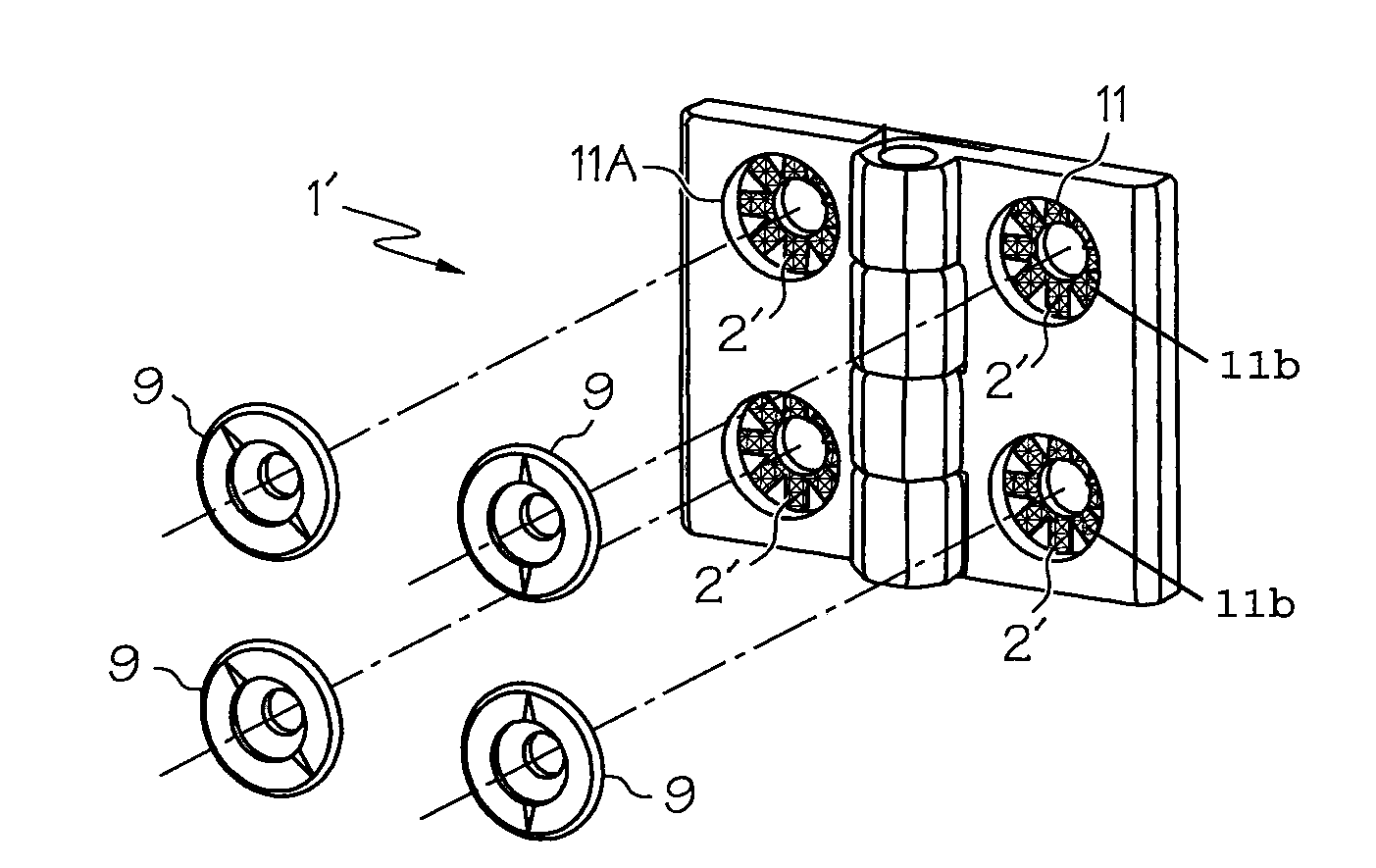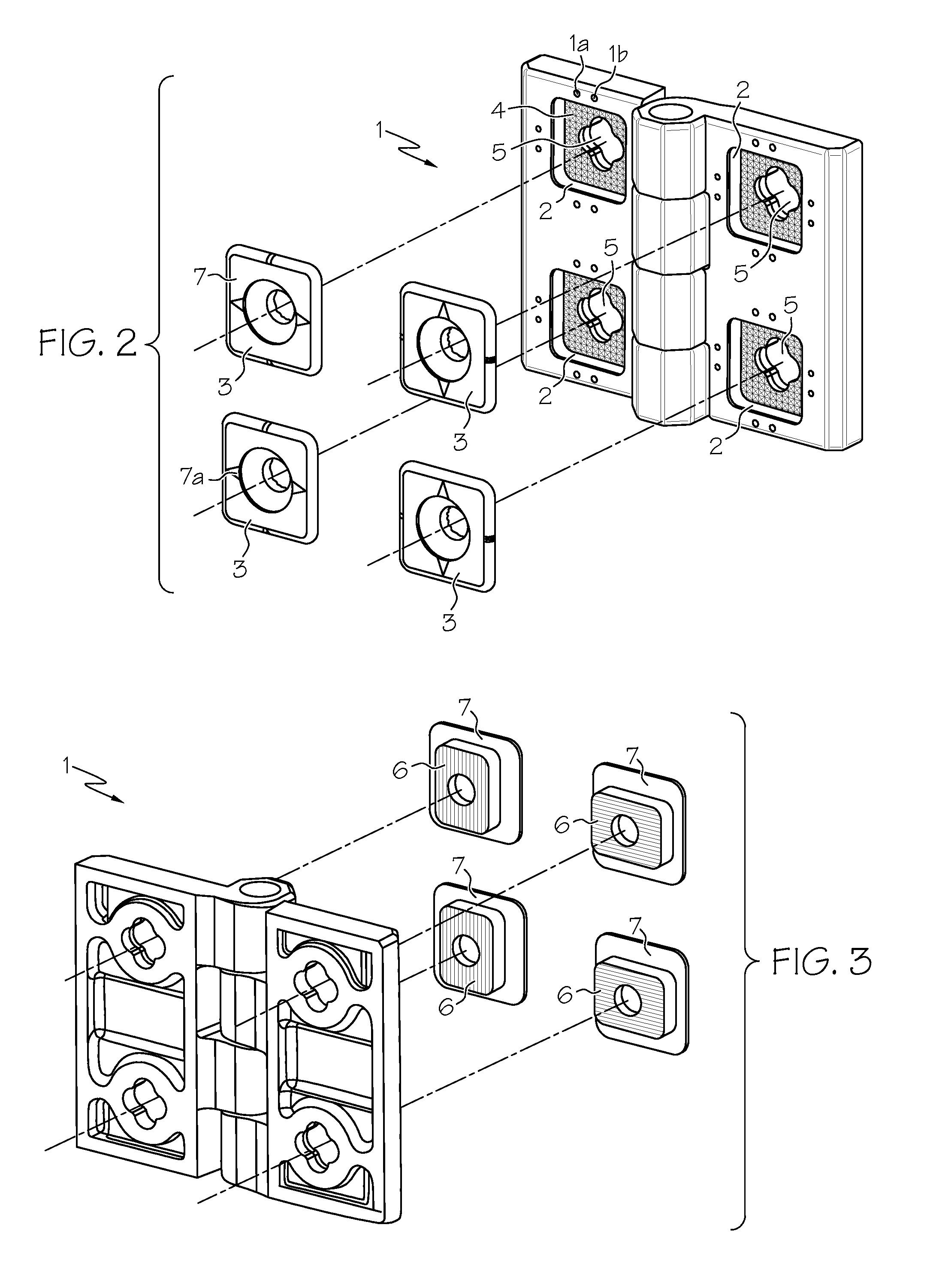Adjustable hinge
a hinge and adjustment technology, applied in the field of hinges, can solve the problems of affecting the the loss of the accurate adjustment of the original position, and the tendency to be dislodged under the weight of the shutter
- Summary
- Abstract
- Description
- Claims
- Application Information
AI Technical Summary
Benefits of technology
Problems solved by technology
Method used
Image
Examples
Embodiment Construction
[0021]Certain terminology is used herein for convenience only and is not to be taken as a limitation on the present invention. Further, in the drawings, the same reference numerals are employed for designating the same elements.
[0022]As can be observed from FIGS. 1 to 6, a hinge body 1 can include a pair of hinge flaps connected by a hinge pin or the like on a common pivoting axis to permit rotation of the flaps relative to each other. For example, the flaps can be connected by a hinge pin or the like that can float freely between the two flaps or can even be secured to one of the flaps. As shown, one flap can rotate approximately 270° relative to the other, though various other angles are also contemplated. Additionally, the hinge body 1 and / or the adjusters can be generally molded of a thermoplastic material, such as a technopolymer, but which may be made also of other materials, such as other synthetic materials, rubber, and / or metal. An example technopolymer can include a glass-...
PUM
 Login to View More
Login to View More Abstract
Description
Claims
Application Information
 Login to View More
Login to View More - R&D
- Intellectual Property
- Life Sciences
- Materials
- Tech Scout
- Unparalleled Data Quality
- Higher Quality Content
- 60% Fewer Hallucinations
Browse by: Latest US Patents, China's latest patents, Technical Efficacy Thesaurus, Application Domain, Technology Topic, Popular Technical Reports.
© 2025 PatSnap. All rights reserved.Legal|Privacy policy|Modern Slavery Act Transparency Statement|Sitemap|About US| Contact US: help@patsnap.com



